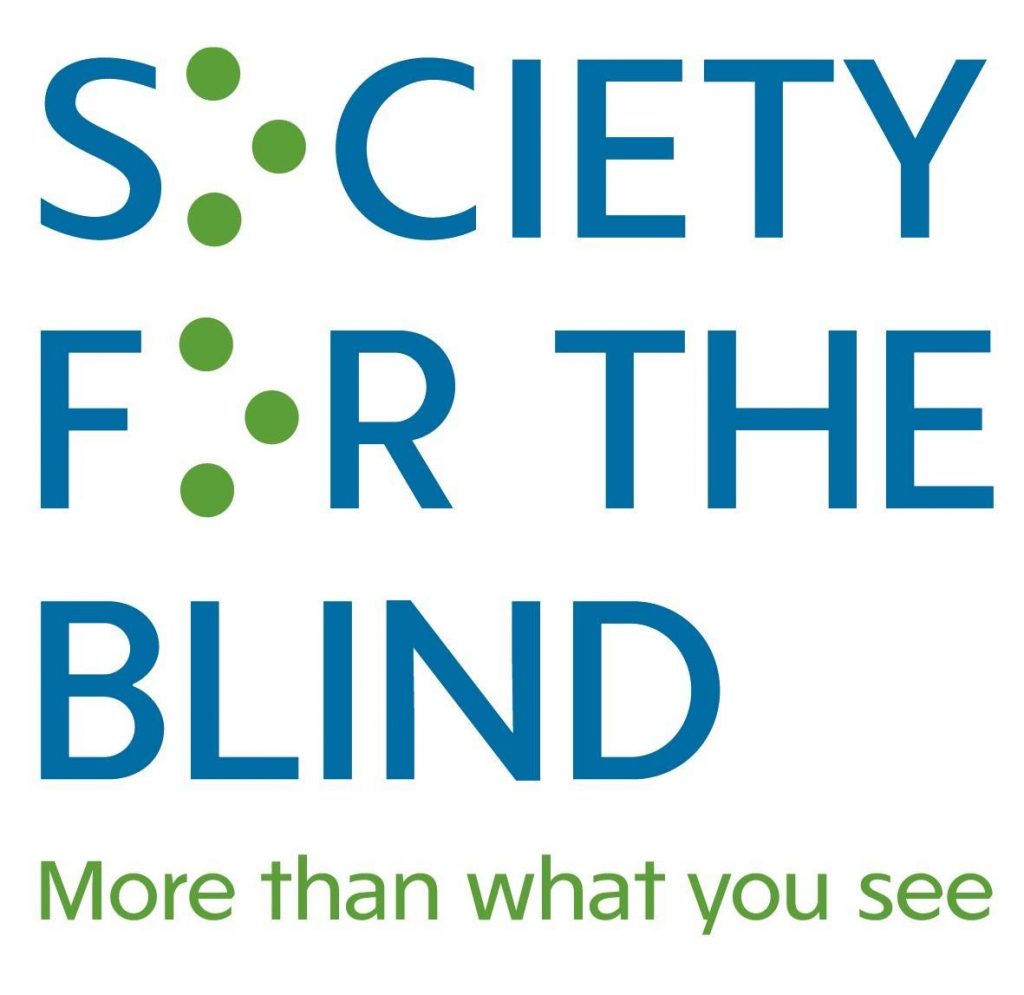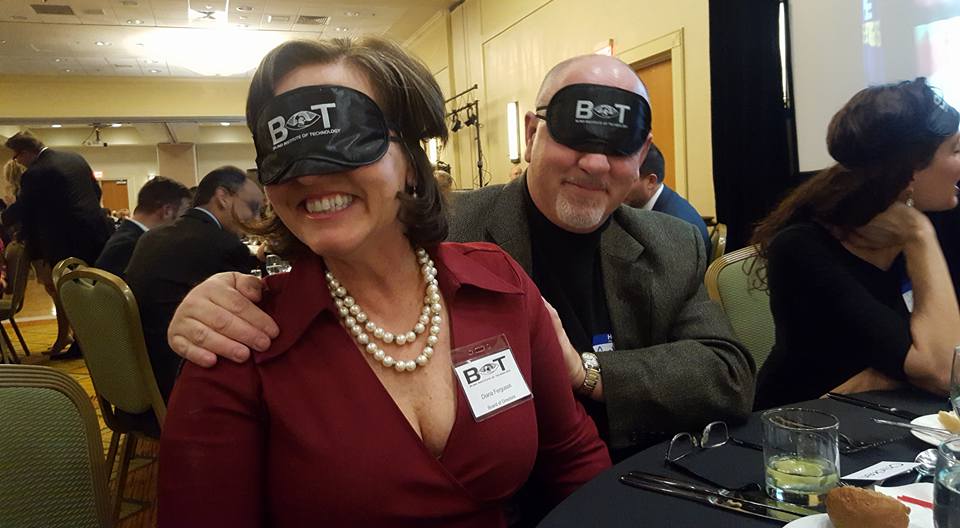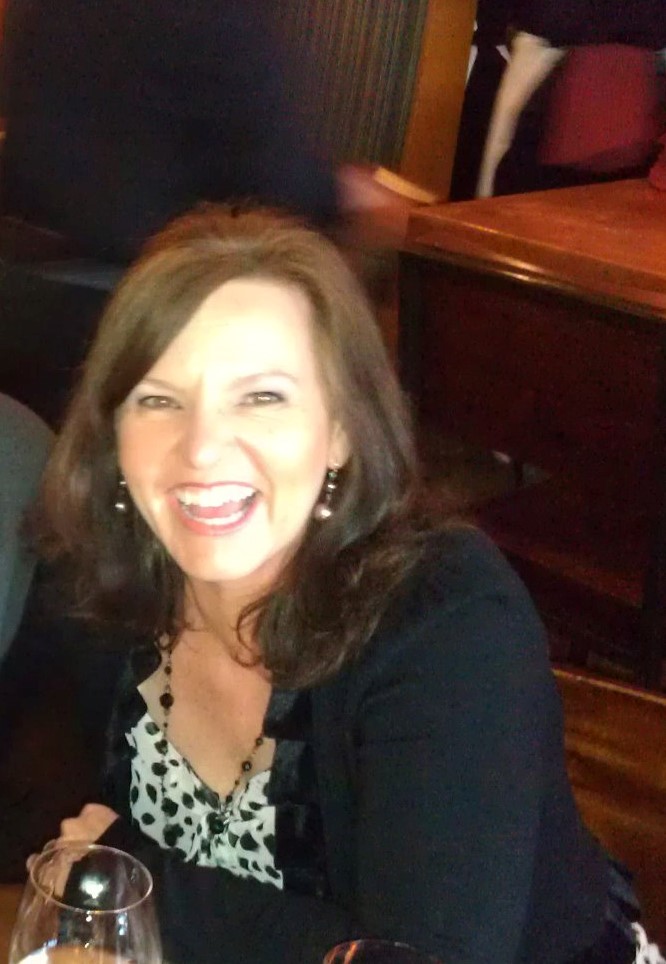BIT is recruiting for multiple Customer Care Representatives (CCR) positions for a Fortune 100 company!
Continue Reading Customer Care Representative RecruitmentCustomer Care Representative Recruitment


BIT is recruiting for multiple Customer Care Representatives (CCR) positions for a Fortune 100 company!
Continue Reading Customer Care Representative Recruitment

Denver, CO (July 20, 2021) – Nearly 70 percent of blind Americans are unemployed. Two organizations want to lower this statistic by joining forces and letting their complimentary missions work together.
Blind Institute of Technology and Outlook Business Solutions found common ground in their passion for fighting the epidemic of unemployment among Americans with visual disabilities.
Today’s perceptions of people with disabilities often present multiple employment challenges. The Blind Institute of Technology focuses on finding employment opportunities for blind and visually impaired professionals in corporate America, placing qualified talent into positions on par with their education and skill level through networking, education and workforce development. Outlook Business Solutions helps businesses overcome growth obstacles through consulting, marketing and accessibility testing by hiring skilled professionals with vision loss.
The Blind Institute of Technology focuses their work on disability advancement and professional development, providing innovative workplace solutions leading to successful and sustainable employment partnerships. The nonprofit’s programs have led to securing positions for professionals with vision loss in all aspects of business, including IT, finance and sales. Their partners around the country include Salesforce and CVS Health.
“We find Outlook Business Solutions’ dedication to ensuring people with disabilities are an important part of DEI initiatives across the country refreshing,” said Mike Hess, CEO of Blind Institute of Technology. “This company works hard to find meaningful earning opportunities for blind professionals. Together, we can help more of the disabled population gain valuable work experience in their chosen fields.”
According to the U.S. Centers for Disease Control and Prevention, more than 25 percent of adults in the U.S. have some type of disability. People with disabilities want to work, but they often find limited opportunities because of their differences and lack of awareness of their capabilities.
Outlook Business Solutions provides businesses with consulting, marketing, and accessibility services. Half of the company’s full-time employees and more than 90 percent of its network of knowledge-based professionals have limited vision.
“As businesses struggle to find skilled, dedicated employees, knowledge-based workers with disabilities represent an untapped labor pool,” said Natalie Hadley, vice president of Outlook Business Solutions. “With some minor adaptations, our freelancers and full-time employees with vision loss produce quality work and are dedicated to the success of our clients. The Blind Institute of Technology will help us find more visually impaired professionals looking for work while educating companies on the importance of inclusivity for everyone.”
Through their partnership, the two organizations use speaking engagements, thought-leadership articles and professional conference presentations to educate businesses on the benefits of seeking out job candidates with disabilities. Hadley and Hess believe that this partnership will move the dial to help low unemployment become common among people with disabilities.
Outlook Business Solutions helps businesses clear their roadblocks to growth while creating knowledge-based earning opportunities for people with vision loss. As part of Outlook Collaborative, a nonprofit with a mission to positively impact everyone who is blind or visually impaired, Outlook Business Solutions provides business consulting, marketing, digital accessibility and customer care services. The company’s growing network of professionals covers marketing strategy, customer service, sales, digital accessibility testing, graphic design/art, copywriting, videography and data entry. Businesses can be successful and help reduce the 70 percent unemployment rate among people with visual disabilities by outsourcing projects to Outlook Business Solutions. Call 531.365.5055 for a free consultation. Learn more at OutlookBusinessSolutions.com.
By leveraging relationships built with its corporate partners, emphasizing workforce development and accessible technology, BIT strives to put its talented, corporate-ready professionals in the best possible position for success. BIT works with disability inclusive Fortune 500 industry giants across the country, placing professionals in all aspects of business, including IT, finance and operations, earning a median salary of $70,000 a year. For those candidates who have the technical aptitude but lack relevant certifications, the BIT Academy offers opportunities to achieve the training and certifications that help them to be competitive, such as its Salesforce Administration Certification Prep course. BIT is the only authorized Salesforce training provider for people with disabilities. Learn more at blindinstituteoftechnology.org.
Kristy Schenderlein
Director of Talent and Marketing
720-933-6388
kristy.schenderlein@blindinstituteoftechnology.org
A late Friday afternoon telephone call more than 25 years ago forever changed the way I view workplace diversity.
The call came from someone in a large corporation who told me in a young-sounding, panicked voice that she had been asked to create a program to hire people with disabilities. I mirrored her panic, as it was the last day of my first week of my first real job after graduate school: managing a federally-funded grant aimed at improving the way employers recruited disabled college students.
But inspiration struck; I took a deep breath.
“Does your organization have a diversity program?” I asked.
“Yes,” she told me.
I encouraged her to talk about some of the successes of the program, and she excitedly described how their efforts were encouraging African Americans to join their company.
“Sounds great,” I said. “What is your organization doing to make this happen?”
She described their outreach efforts on college campuses.
“That’s terrific,” I told her. “Just keep on doing what you’re doing.”
“That’s it?” she asked in a startled voice.
“Well, yes,” I said. “You might have to tinker with the program to adapt it to students with disabilities and those that support them. But there’s no reason to reinvent the wheel.”
“Oh,” she said. “Well, thanks. Have a great weekend.”
I have thought about this exchange often as I straddled the gap between diversity, disability, and leadership. Over the years, I have heard countless diversity managers say some version of:
“Look, we’re focusing our diversity program on (fill in the blank(s). We know disability is important, but—.”
This thinking is self-defeating, as people with disabilities appear in all groups. More importantly, viewing each underrepresented group separately masks similar challenges members of each group face: less ability to control our visibility, an underappreciation of our skills, the tendency to be treated as the spokesperson of the underrepresented group(s) to which we belong, and the sense that we are round pegs in square holes. Viewing each group separately also suggests that a separate skill set is required to support members of each separate group to succeed, making the diversity journey much harder than it needs to be.
Consider the following training activity I have used over the years:
I ask participants to think of an example when they successfully interacted with someone they perceived to be significantly “different,” and what made the interaction successful?
While the differences exercise participants described were vast, the skills used to bridge these differences were surprisingly similar, with empathy, active listening, reaching for similarities, and managing conflicts the most commonly noted.
I suggest the following strategies for those interested in creating common ground among groups, with a focus on people with disabilities.
Stress similarities whenever possible. When I discuss the Americans with Disabilities Act-related “reasonable accommodations” concept, I point out that each of us subtly accommodate to the quirks of others; that’s what inclusion is all about.
Use intersectionality to your advantage. Intersectionality, when stripped of the controversy the term has caused, simply means that each of us belong to separate but related groups, and that exploring these cross-currents can lead to empathy and joint action.
Differences are far less important when each member of the group is truly committed to a common, challenging goal.
Explore the connection between managing diversity and managing conflict.
Incorporate diversity concepts into existing leadership and management training, stressing that the skills learned, while more useful when working with people from underrepresented groups, work for everyone.
Adapt strategies you used to connect with one group as you reach out to other groups; no need to reinvent the wheel.
Consider the possibility that the thread binding diversity, disability, leadership, and management is inclusion.
I recently interviewed an upwardly-mobile nurse whose ascent was halted when she suddenly became blind. After years of rehabilitation, education, numerous frustrating job interviews, and a couple of job that didn’t move her toward her wish of returning to the health care sector, she suddenly landed her dream job.
“How did you land that job?” I asked.
She talked about hearing of the job through a contact; how the hiring manager seemed unprepared for a blind woman with a service dog to enter her office, and how the interviewer seemed uninterested in her demonstration of the technology she used to read and manipulate text on a computer screen.
“But then the interviewer said that I was the most qualified person for the job that she had interviewed thus far, that she was having trouble filling the position, and that she wanted to hire me.”
“But what about the tech challenges?” the interviewee asked the hiring manager.
That’s not my problem,” her future boss harumphed. “That’s IT’s problem.”
So my interviewee’s new career in healthcare was launched, with more than its share of challenges, surprises, and successes.
She’s still happy with her current job ten years later.
Yesterday, I heard about a respected entomologist who, among other things, had identified a new breed of mosquito. But after suddenly becoming blind, he has not been able to reenter the field of insect study. The high-pitched buzz among his interviewers seemed to be that he couldn’t possibly support other entomologists because he is blind.
“Ultimately,” I thought, “landing a job in a nontraditional career path comes down to finding that stranger who somehow believes in you and your abilities.”
How can we encourage these unlikely alliances to form?
I thought back to those stranger allies that crossed my path. Michael Pratt, a young conductor who took me on as a percussionist in the orchestra of the college I attended even though I would be unable to see his gestures. Lana Smart, who gave me a bolt of confidence during my first day on my first job after graduate school. Mary Jacksteit, who hired me to support her in promoting dialogues between pro-choice it and pro-life activists even though I was a male with no mediation training. Rochelle Friedlich, who hired me as a consultant after our employer laid me off.
Over the years, I’ve had the chance to ask these supporters what prompted them to take a chance on me. Michael Pratt said that I was the only percussionist who auditioned, and that while he knew that he could import other percussionists from elsewhere, my confident musicianship sold him. Lana Smart told me after becoming my boss that the organization had found it hard to locate the right person, and that while inexperienced, my enthusiasm, independence, and ideas convinced her to hire me. Mary Jacksteit told me that she was having trouble finding the right person, and that my ability to find value on all sides of a controversial issue and willingness to listen without judgment sealed the deal for her. And Rochelle Friedlich told me that she was afraid that the initiative we were shepherding might flounder if my skill set left the building.
In order to transform the sound of hiring people with disabilities and other underrepresented groups from the whiny buzz of a mosquito to a productive hum, we can find ways to encourage “people with significant differences” and hiring managers to meet informally. Encourage children and youth to develop strengths and support them in exploring how these strengths can lead to a career. Take young people to work when you can. Give them a realistic view of the work world, with its challenges and rewards. Find ways to support them to develop the grit to grapple with the inevitable discrimination.
Support hiring managers in sharpening their empathy, curiosity, and listening skills. Encourage them to serve as volunteers in organizations that address needs of groups to which they don’t belong. Help them see that good ideas can come from all quarters. Take inclusion seriously.
And just the right amount of desperation might tip the scales.
“Assuming competence from day one is a must if you want to retain talented disabled employees…”
So said Nancy Doyle in a recent Forbes article entitled “Assume Competence: Neurodivergent Staff Don’t Need Kid Gloves.”
This advice came to mind during a recent conversation between two visually-impaired people and a COO of an upcoming nonprofit organization.
“How can I make my presentations more accessible to blind people?” the COO asked us.
After an awkward pause, my visually-impaired colleague and the COO began an increasingly lively conversation sharing the often similar challenges they experienced creating PowerPoint presentations: what fonts to use, how to incorporate headings, what content to include on which slide–
“Don’t worry about it so much,” my colleague counseled. “The easiest thing to do is to ask disabled people who will be attending your presentation if you get the chance.”
“My take on this might be a bit weird,” I interjected, “but are you aware of the concept of universal design?”
Verbal head nods.
“Well, we usually think about universal design in conjunction with environments: how many non-disabled people use wheelchair ramps, for example. But over the years, I have discovered that this concept is relevant to leadership best practices – that those who do best leading people different from themselves are often better leaders for everyone.”
More verbal head nods.
“This concept might also apply to presentations,” I continued. “Like most non-disabled people, we dread PowerPoint presentations. They’re dull. Crammed with unnecessary information. Disorganized. Preachy.”
“True,” someone said with a smile in her voice.
“So by improving your presentation skills, you will make everyone happier. Put only one concept per slide, and let your presentation and each participant’s notetaking skills do the rest. Accept that people learn more if they believe they are controlling their learning. Mix stories and statistics, because stories bring feelings into the picture — and feelings, not thoughts, drive action.”
This led to a brief discussion about the downsides of cramming too much information onto a slide, and how to address this challenge.
“And we could do a lot of good by trying to figure out if another approach might be better in conveying information than a PowerPoint presentation,” I said, trying to conclude my ad hoc presentation smoothly. “And we would each do well in trying to assume that everyone we meet is competent, especially those who are significantly different from us.”
This essay was written under the auspices of Blind Institute of Technology™ (BIT, a nonprofit organization that envisions a world in which disabled people have the same employment opportunities as their peers. They aim to help disabled professionals and the employers who hire them find synergistic success through education, preparation, and accessible technology. For additional information, please visit their website).
The Blind Institute of Technology (BIT) is conducting an executive search for the role of Vice-President of IT Operations for a technology company located in Raleigh, North Carolina. If you are interested in this position and your experience matches the qualifications described below, please e-mail your resume and cover letter to Kristy.Schenderlein@blindit.org.
Role: Vice-President of IT Operations
Department: Information Technology
Location: Durham, NC (Relocation package available)
Reports to: President
The VP of IT (VPIT) is accountable for defining and delivering IT strategy and capabilities across the enterprise. This includes data analytics and business intelligence, development and support, infrastructure, security, accessibility and technical services. Reporting to the President, the VPIT will be responsible for giving oversight and direction to IT and business leaders on strategy, standards, and opportunities for shared services and economies of scale.
The VPIT is a key contributor to the company’s strategy and planning process and will be responsible both for IT operations and for technology and eCommerce. It is critical for the VPIT to build strong and productive relationships with all business unit leaders, acting as a true partner and making IT a business enabler. The VPIT is also the executive sponsor of accessibility across all of our client’s systems to support their mission.
The VPIT will manage 3-5 direct reports on the IT/eCommerce leadership team; total headcount in the IT organization is approximately 12.
Possesses exceptional interpersonal and communication skills, both oral and written; able to articulate ideas to both technical and non-technical audiences. Excellent negotiating skills with internal customers and external service providers.
Intermittent supervision with established goals and regular performance reviews.
A bachelor’s degree is required.
An advanced degree in a related field, such as computer science, engineering and/or business (MBA) is preferred.
As a member of the senior leadership team, make a key contribution to the formulation of the company’s business and digital strategies.
Proactively advise the senior leadership team on the emerging technologies and digital trends that are most relevant to the company’s goals and evolving needs.
Help determine capital investment parameters, priorities and risks for enterprise-wide IT initiatives to maximize the return on investment.
Knowledge of accessibility solutions
Knowledge of warehouse management and retail POS solutions
Demonstrated experience driving digital transformation and business growth through innovation and the implementation of technology.
Possesses solid knowledge in emerging technologies, and the ability to apply these in the service of the company’s key business goals.
Experience leading complex, major change initiatives; demonstrated skills in change management.
Experience building an enterprise level data analytics capability.
An entrepreneurial mindset; able and interested to pursue new business opportunities.
Customer-service oriented.
Builder of strong technology vendor partnerships, and able to manage multiple vendor relationships to ensure the best performance and financial return.
Demonstrated experience with SaaS, cloud-based, and outsourced solutions through third party providers.
15 years of career experience in technology, including a minimum of 10 years in a leadership position.
Experience in a VPIT or equivalent position is preferred/required.
Experience managing large outsourcing partnerships.
Experience in a federated structure with matrixed leadership responsibilities.
Knowledge of a range of vendor technology solutions; able to select and integrate the most appropriate technologies to support the business
Demonstrated ability to design and implement comprehensive approaches to cyber security and risk management.
Experience designing and managing an effective IT governance framework across the spectrum of IT service delivery.
Outstanding organizational skills, and the ability to manage multiple priorities in a fast paced, high pressure environment.
A strong background in operational and capital finances, and IT budget development
As a member of the senior leadership team, make a key contribution to the formulation of the company’s business and digital strategies.
Proactively advise the senior leadership team on the emerging technologies and digital trends that are most relevant to the company’s goals and evolving needs.
Significant experience in driving accessibility solutions
Experience implementing warehouse management solutions preferred
Experience with retail POS
Possesses exceptional business acumen, analytical and problem-solving abilities.
Comfortable with ambiguity; can handle the unexpected with flexibility.
A team player who favors collaborative approaches when working with internal and external partners.
Proven ability to build trust with others through a commitment to the highest ethical and professional standards.
A high energy executive; tenacious and passionate about reaching the goal, while keeping ego in check.
Strong ability to build and manage appropriate security architecture to protect assets and ensure business continuity
The VPIT will work from our client’s headquarters in Durham, NC and is expected to travel (approximately 20% of the time).
Develop an IT vision, strategy, and a roadmap, and lead the IT team and its business partners in effective execution.
Ensure that current and planned technical architecture, investments and solutions are aligned with company business objectives.
Develop a road map to ensure all our client’s systems are fully accessible for our blind and low vision employees.
Prepare and monitor IT operational budgets that meet prevailing objectives and constraints.
Develop and execute an analytics program that will allow company business leaders to make data-based decisions.
Build strong relationships with business groups and their leaders across the enterprise, and develop a detailed understanding of their issues, challenges and opportunities.
Implement the most appropriate and effective IT organizational design to support and engage with the business.
Ensure transparency and collaboration between the IT organization and its business partners.
Foster a culture of innovation, transparency and accountability in IT.
Promote a “business-first” mentality at all levels of the IT organization.
Ensure that the organization has strong systems analysis and project management skills, and the ability to execute business-critical projects on time and on budget.
Direct the design, planning, implementation, and maintenance of the computing infrastructure that supports the company’s operations and business applications.
Establish metrics for managing IT effectiveness and for measuring the impact of IT on the business.
Establish appropriate service levels and the processes to ensure that KPIs are met.
Maintain oversight of all IT projects, ensuring that commitments are properly planned, staffed, monitored and reported.
Establish a comprehensive enterprise information security program to ensure the integrity, confidentiality and availability of relevant data, while maintaining compliance with Federal CMMC standards
Lead the design and implementation of an enterprise-wide disaster recovery and business continuity plan.
Establish and enforce IT policies, processes, portfolio management, development standards and methodologies.
Monitor the industry for developments in IT operations; evaluate and implement relevant new tools and service management frameworks.
Review, recommend, and oversee all vendors and managed service agreements for computing, telecommunications, IT services, and equipment.
Other duties and projects as assigned
While performing the duties of this job, the employee is in a moderate office environment. The employee is regularly required to sit; stand; walk and use hands.
This job operates in a professional office environment. This role routinely uses standard office equipment such as laptop computers, smartphones, photocopiers, filing cabinets and scanners. The noise level in the work environment is usually moderate. When in the Manufacturing area, hearing protection may be required depending on the department.
The physical demands and work environment described here are representative of those that must be met by an employee to successfully perform the essential functions of this job. Reasonable accommodations may be made to enable individuals with disabilities to perform the essential job functions.
Blind Institute of Technology™ is an organization with boots on the ground in the Denver metro area working hard to advance the professional opportunities for people with disabilities. We’re a passionate team with a dynamic blend of backgrounds, disabilities, experiences, and motivations, doing whatever we can to get the job done.
Our message is that professionals with disabilities possess skills and abilities that corporations have overlooked or have yet to discover. Our strategy is to go directly to the C-suites of corporate America to provide a guiding hand into a successful diverse and inclusive culture.
Our end goal is always employment. We treasure the moments when someone gets or gives the good news, “You’re Hired!” We look forward to the day when all of corporate America is equipped to welcome people with disabilities into an environment where they can explore the same employment opportunities as their peers.


Denver – Society for the Blind in Sacramento and Blind Institute of Technology ™ (BIT) in Colorado are joining forces to create a new pathway for employment of people living with blindness or visual impairment. Both organizations are driven by the ultimate goal of full independence for people who are blind and visually impaired (BVI), which makes this a natural pairing.
BIT’s sole focus is employing BVI professionals in corporate America, placing them in positions on par with their education and skill level, through networking, education and workforce development. Society for the Blind is taking on the challenge of employment with its primary focus placed on providing people who are blind or visually impaired with the tools they need to attain employment and independence. The two forward-thinking organizations will pull their resources together to achieve the goal of significantly decreasing not only unemployment, but the underemployment epidemic that plagues professionals who are blind or visually impaired.
“For far too long, blindness organizations across the country have approached the unemployment epidemic amongst the blind and visually impaired in a siloed fashion, which has done nothing as evidenced by the same unemployment rate as 30 years ago when the ADA was passed. It is time to end the epidemic and put BVI professionals where they belong, in mainstream corporate America. I am super excited to be collaborating with a progressive leader like Society for the Blind and look forward to the impact we will make together.” Mike Hess, BIT executive director.
“It is so important for blindness organizations like Society for the Blind to be creative and really make a difference in the employment opportunities for people living with low vision and blindness. I believe that collaborations allow us all to do more and be more effective, and that is why I am thrilled to be partnering with BIT. Working together, I believe we can truly move the needle on the rate of employment in a positive direction.” Shari Roeseler, executive director, Society for the Blind.
By leveraging relationships built with its corporate partners, emphasizing workforce development and accessible technology, BIT strives to put its talented, corporate-ready professionals in the best possible position for success. BIT works with disability inclusive Fortune 500 industry giants across the country, placing professionals in all aspects of business, including IT, finance and operations, earning a median salary of $70,000 a year. For those candidates who have the technical aptitude but lack relevant certifications, the BIT Academy offers opportunities to achieve the training and certifications that help them to be competitive, such as its Salesforce Administration Certification Prep course. BIT is an authorized Salesforce training provider for people with disabilities.
Society for the Blind is the Sacramento region’s only comprehensive training and rehabilitation center serving people who are blind or have visual impairments. Serving 27 counties in northern California, Society serves nearly 6,000 people impacted by vision loss or blindness each year through its Core Blindness Skills programs, a Low Vision Clinic and other supportive services and programs. In 2018 Society for the Blind established the CareersPLUS program in an effort to address the high unemployment rates among people with vision loss. In the past three years, more than 65 people have found employment and/or pursued college and vocational training through the CareersPLUS program. Society for the Blind is an authorized provider of employment services for the State of California Department of Rehabilitation.
To learn more about the two organizations, visit their websites at www.blindinstituteoftechnology.org and www.societyfortheblind.org.

In my nearly 8 years of running a non-profit, I have met only a few executives who have impacted me as much as Diana Ferguson. It is with a heavy heart that I share that she passed away on December 6th, 2020. Diana made a forever impact on me personally and a lasting legacy through her commitment to BIT. When she joined our Board of Directors in 2016, her first order of business was to inform me that she would be a “roll up your sleeves” type of Director. I almost cried at her declaration. She followed this up by walking the walk. Diana had those hard conversations within her own organization, Oppenheimer Funds, creating an award-winning program within a historically conservative financial institution. Her influence helped us develop BIT’s model of leading with education for both our employer partners and candidates. She coached me on how to evolve our business to one that can work within the Fortune 100 space. The manner in which we present BIT to corporations today derived directly from Diana’s guidance. Nothing I could say or do would express the gratitude I have for Diana’s leadership and now legacy. To honor Diana and her importance to BIT and myself, we will be changing the name of the Diversity and Inclusion Champion Award to the Diana Ferguson Diversity and Inclusion Champion Award, indefinitely. Diana may no longer be physically with us, but her contributions and spirit will impact BIT and my life forever. Thank you Diana for always bringing a ray of sunshine into life….we will do our best to keep it shining.
You will be deeply missed,
Mike Hess


Denver, CO – The Blind Institute of Technology (BIT) and Activate Workforce Solutions have formed a partnership to advance their shared goal of achieving sustainable employment for underrepresented individuals, a first of its kind collaboration that is truly inclusive to all.
While BIT focuses on employment for professionals with disabilities, Activate works with individuals who have faced situational or long-term poverty, including people of color, immigrants, refugees, and homeless. Many of Activate’s clients are referred from work-experience or educational programs. The common thread is that all clients are seeking perpetual, meaningful employment to enhance their quality of life and to become contributing members of society but too often lack the employment opportunities because of their differences.
The two organizations will combine their expertise in talent acquisition and talent development to deliver a comprehensive workforce solution through career-readiness preparation, skill enhancement and post placement coaching. Read the full article from Activate Workforce Solutions >>
The following information was compiled by a member of our BVI community – Jodi Witthaus. Jodi is a Rehabilitation Counselor with the State of Colorado and has her Master’s in Social Work. With the unprecedented circumstances surrounding COVID-19, many people may be struggling with trauma. We hope this information will help.
There are three types of trauma:
Vulnerability: more likely to be emotionally harmed or attacked.
Responses include:
If these responses are interfering with everyday life or are not getting better over time it is time to get professional help.
Remember, this is not forever!
Missouri Department of Mental Health
dmh.mo.gov/healthykids/providers/trauma
National Institute of Mental Health | Coping with Traumatic Events
nimh.nih.gov/health/topics/coping-with-traumatic-events/index.shtml
BrainLine | How PTSD Affects the Brain
brainline.org/article/how-ptsd-affects-brain
American Psychological Association | Building Your Resilience